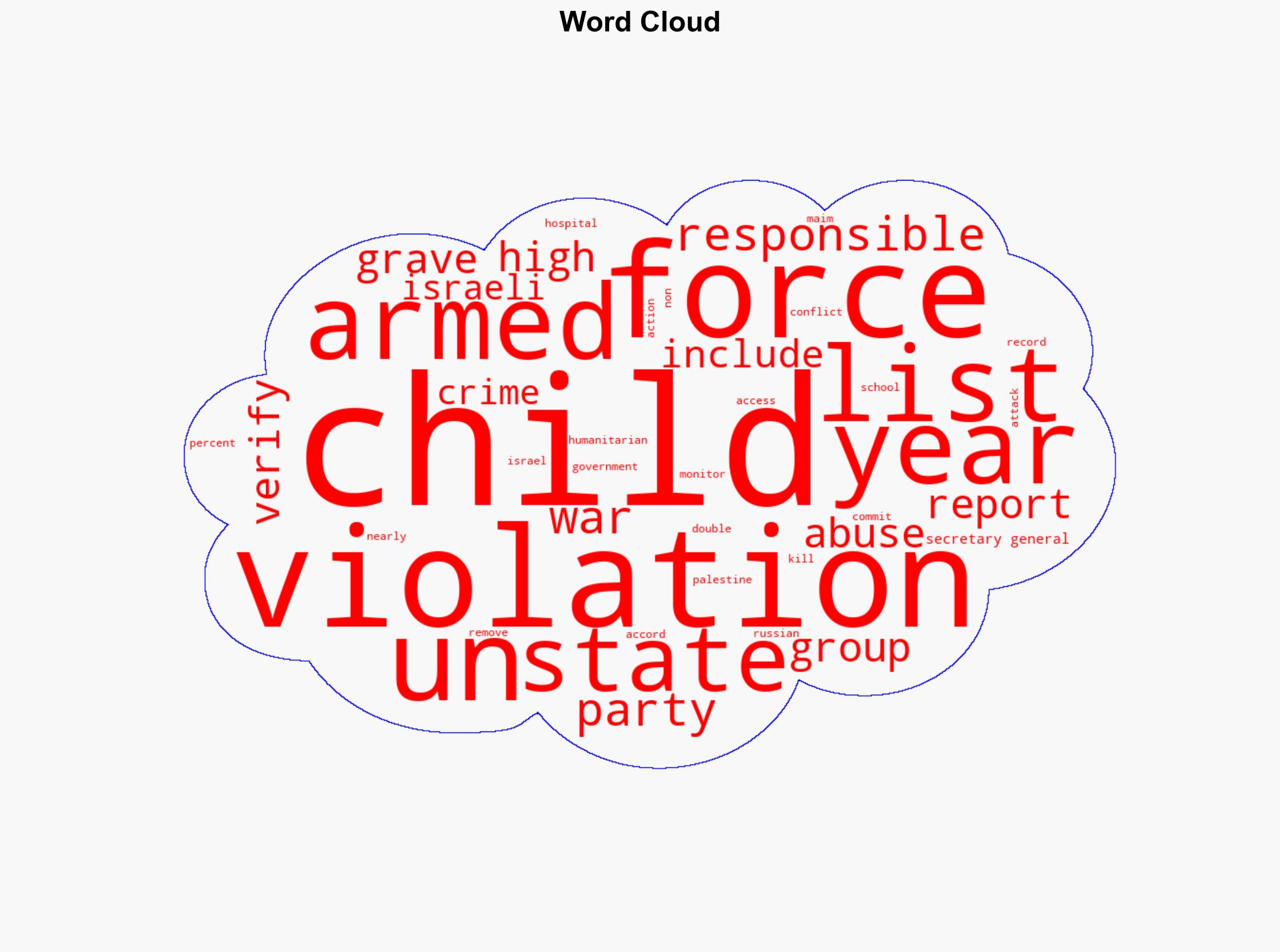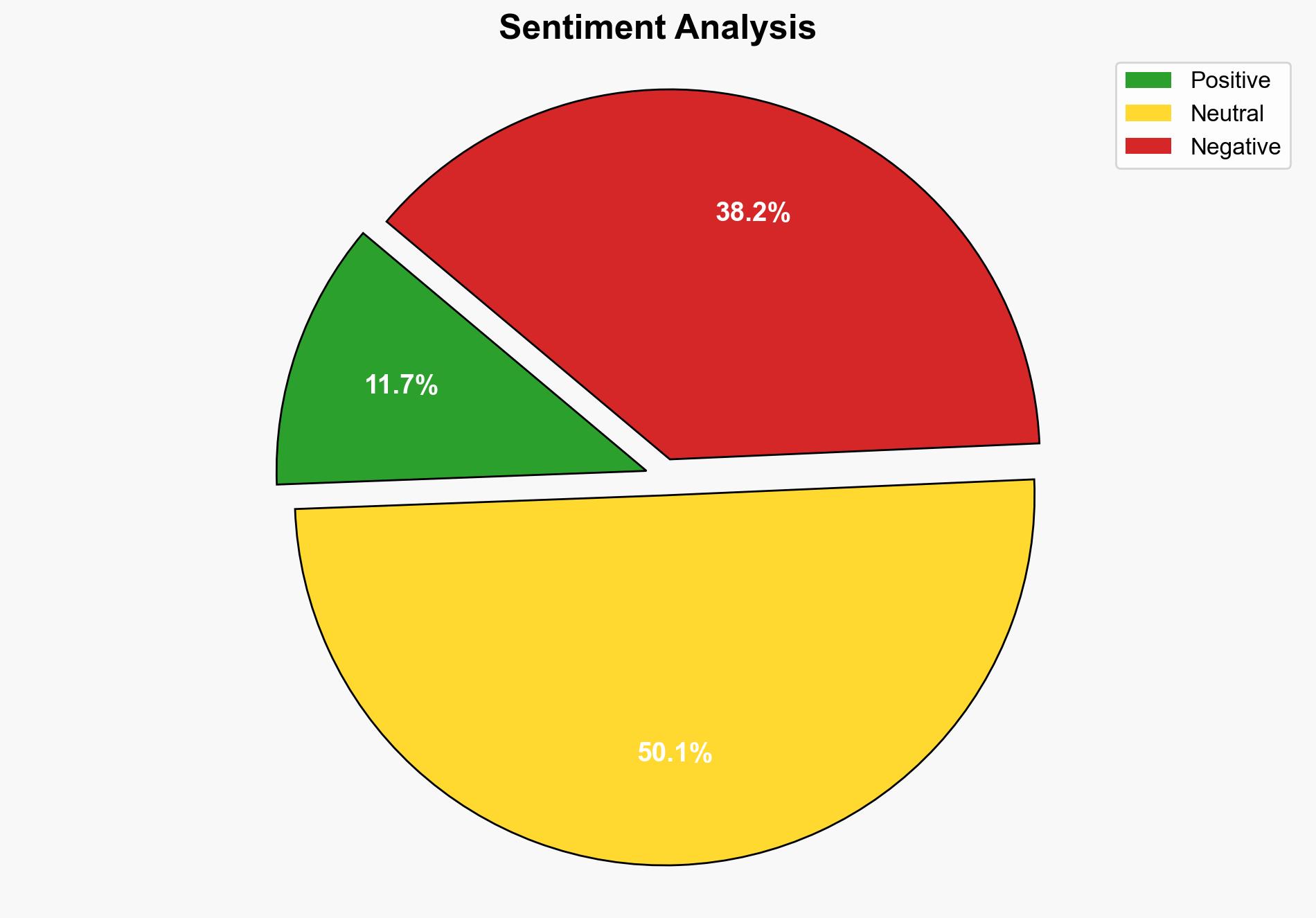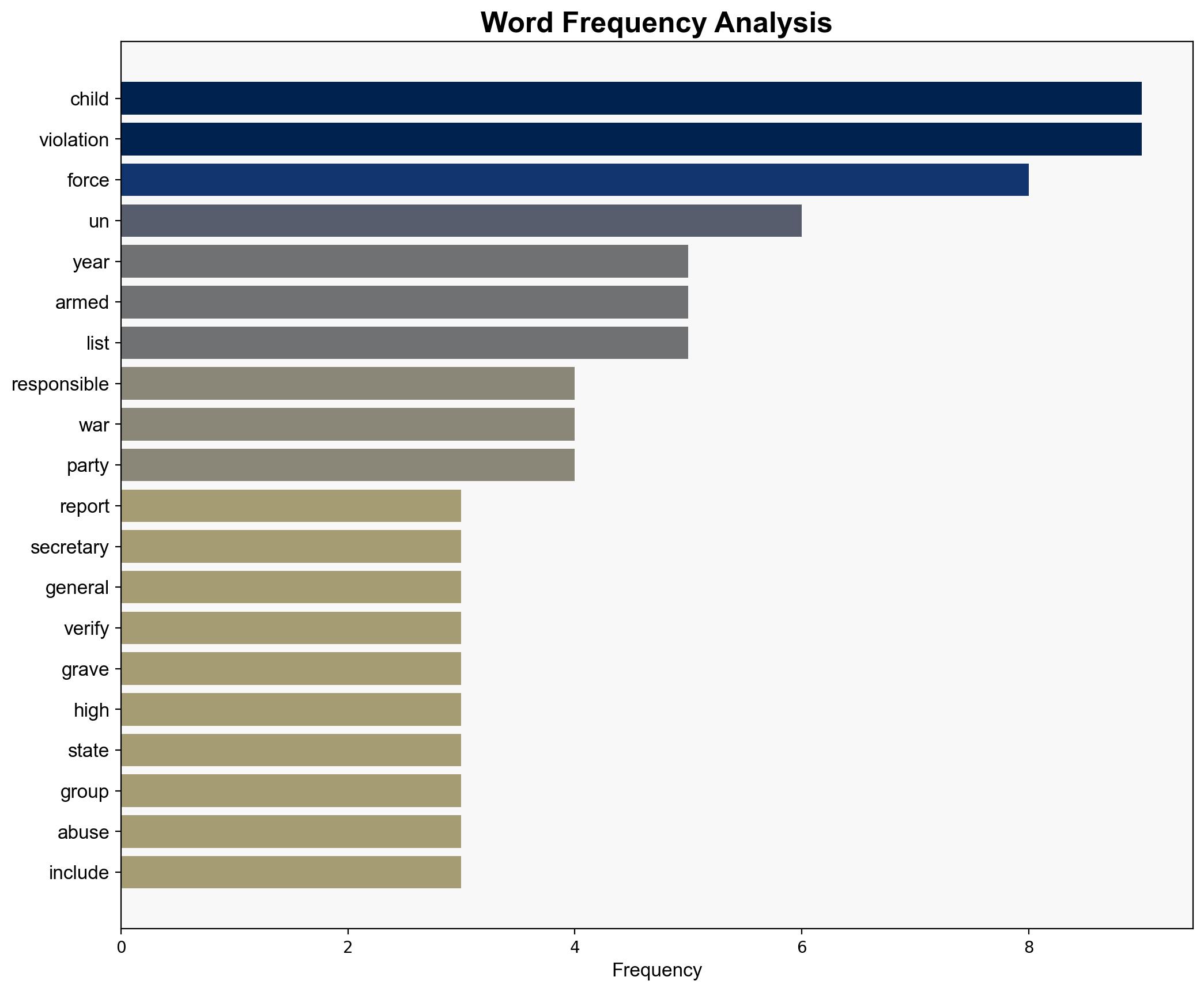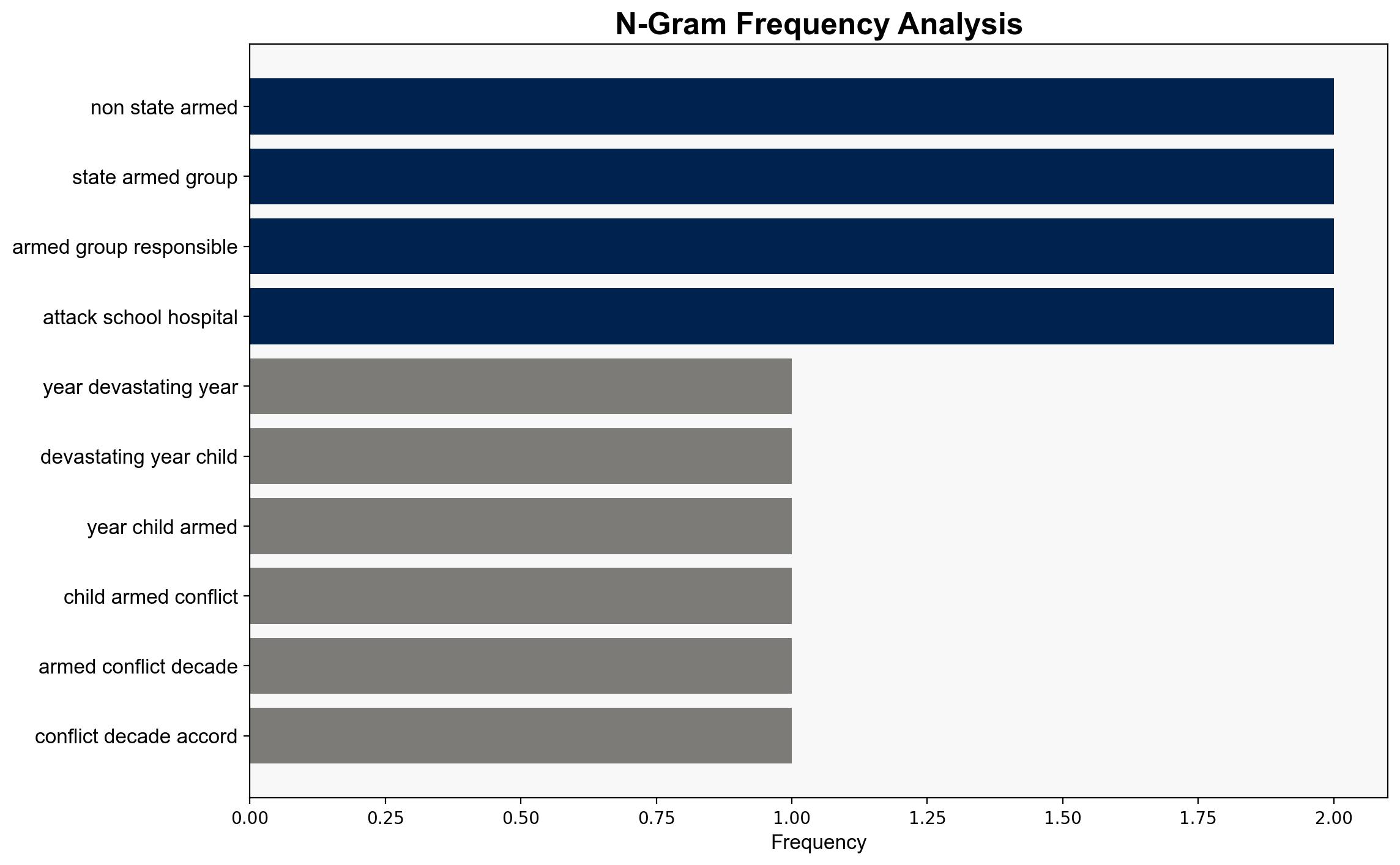Violations Soar Against Children in Armed Conflict – Human Rights Watch
Published on: 2025-06-20
Intelligence Report: Violations Soar Against Children in Armed Conflict – Human Rights Watch
1. BLUF (Bottom Line Up Front)
The latest United Nations report highlights a significant rise in violations against children in armed conflict zones, with a 112% increase in verified grave violations. Non-state armed groups are responsible for approximately half of these abuses. The report identifies Israel-Palestine, the Democratic Republic of Congo, Somalia, Nigeria, and Haiti as high-incidence areas. Immediate diplomatic and humanitarian interventions are necessary to address these violations and protect children.
2. Detailed Analysis
The following structured analytic techniques have been applied to ensure methodological consistency:
Causal Layered Analysis (CLA)
The surface events reveal an increase in child-targeted violence, with systemic structures indicating a lack of effective international enforcement mechanisms. The prevailing worldview suggests a normalization of violence in conflict zones, while underlying myths perpetuate cycles of violence.
Cross-Impact Simulation
The conflicts in Israel-Palestine and Ukraine have significant regional impacts, potentially destabilizing neighboring countries and affecting global humanitarian efforts.
Scenario Generation
Potential futures include escalated regional conflicts if violations continue unchecked, or improved conditions through international intervention and policy enforcement.
Narrative Pattern Analysis
Ideological narratives in conflict zones often justify violence against children as collateral damage, complicating peace efforts and humanitarian access.
3. Implications and Strategic Risks
The increase in child-targeted violence poses significant risks to regional stability and international security. The normalization of such violations could lead to long-term socio-political instability and increased radicalization. There is also a risk of international reputational damage for countries failing to address these issues.
4. Recommendations and Outlook
- Enhance diplomatic efforts to pressure non-compliant states and groups into adhering to international child protection standards.
- Increase funding and support for humanitarian organizations operating in high-risk areas.
- Develop and implement robust monitoring and reporting mechanisms to ensure accountability.
- Scenario-based projections: Best case – successful international intervention reduces violations; Worst case – continued escalation leads to broader regional conflicts; Most likely – incremental improvements with ongoing challenges.
5. Key Individuals and Entities
Antonio Guterres
6. Thematic Tags
national security threats, child protection, international law, humanitarian intervention, regional stability





